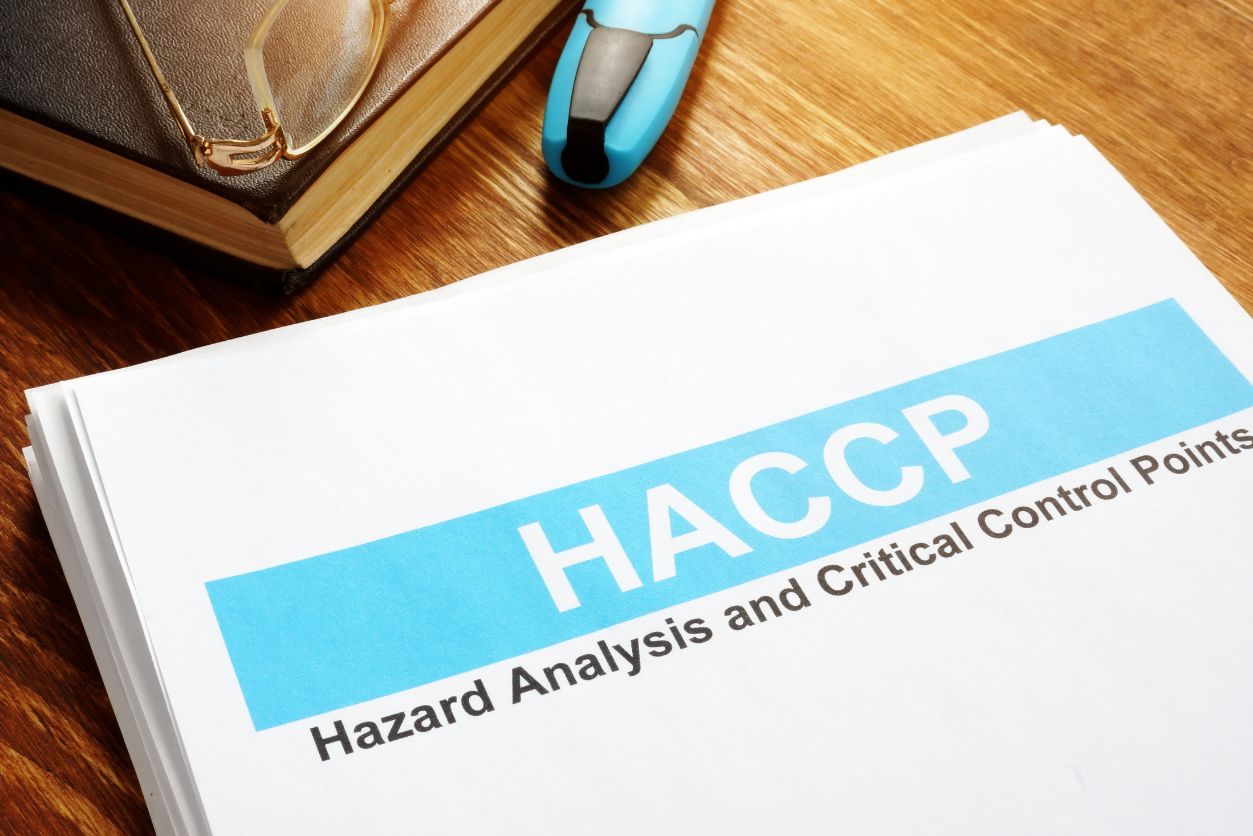The Hazard Analysis and Critical Control Points (HACCP) system has become the cornerstone of food safety management, focusing on preventing hazards that could cause foodborne illnesses.
Originating in the 1960s, HACCP has evolved into a globally recognized approach to identifying and managing potential food safety risks. One of the core elements of HACCP is the concept of Critical Control Points (CCPs)—specific stages in the food production process where controls can be applied to prevent, eliminate, or reduce food safety hazards to an acceptable level.
In this article, we’ll explore the critical role of CCPs within HACCP, how to identify them, and best practices for managing these points effectively.
What are Critical Control Points?
To ensure food safety, it’s essential to understand Critical Control Points and their role in mitigating risks within the HACCP framework. At each stage of food processing, potential hazards must be assessed to determine where targeted control measures can be most effective. CCPs are these precise steps where controls are necessary to prevent or address potential hazards, such as contamination, growth of pathogens, or chemical exposure.
For professionals responsible for developing or managing HACCP systems, completing HACCP certification training can provide the knowledge and skills needed to identify and manage CCPs effectively. Identifying CCPs enables businesses to implement controls at these key stages, helping ensure that hazards are managed before food products reach consumers.
Identifying Critical Control Points in Food & Beverage Production
Identifying Critical Control Points is a fundamental step in the HACCP process, requiring a thorough understanding of each stage in the food production cycle. The goal is to pinpoint specific points where controls can be applied to prevent, eliminate, or reduce safety hazards to safe levels. For food and beverage manufacturers, correctly identifying CCPs ensures that food safety risks are addressed proactively, protecting consumers and complying with regulatory standards.
- Conducting a Hazard Analysis: The first step in identifying CCPs is conducting a comprehensive hazard analysis. This involves examining each step of production, from raw material sourcing to final packaging, to uncover potential biological, chemical, or physical hazards.
A thorough hazard analysis serves as the backbone of identifying effective CCPs, guiding the process and ensuring that all potential hazards are accounted for. Understanding these risks allows producers to assess which stages are most vulnerable to contamination or degradation.
- Using the CCP Decision Tree: One common method for determining CCPs is the CCP decision tree, a structured tool that asks specific questions about each step in the production process. Questions may include whether a control measure is necessary at this step, if the hazard can be reduced to a safe level, and if action can be taken to correct issues. The decision tree helps in clarifying which points should be designated as CCPs.
- Evaluating Process Flow and Ingredient Sources: Each ingredient and processing step must be evaluated for its potential hazards. For instance, raw meat processing may have CCPs focused on cooking temperatures to eliminate pathogens, while juice production might emphasize filtration to remove contaminants. Assessing the flow and source of each ingredient enables a targeted approach to CCP identification.
Managing Critical Control Points in Food & Beverage Production
Once Critical Control Points are identified, the next essential task is managing these points effectively. This management includes setting specific criteria, monitoring CCPs continuously, and implementing corrective actions as needed. By managing CCPs diligently, food and beverage producers can control hazards, ensuring products remain safe and of high quality throughout production.
- Establishing Critical Limits: For each CCP, it’s crucial to set measurable critical limits, which are specific thresholds that must be met to prevent, eliminate, or reduce hazards to an acceptable level. For example, a critical limit may specify that cooking temperature must reach 165°F for poultry products to destroy pathogens. These limits provide a clear standard for ensuring safety at each CCP.
- Monitoring Procedures: Regular monitoring at CCPs is essential for verifying that each critical limit is met. This can involve continuous monitoring systems, such as temperature sensors, or periodic checks, such as pH testing in beverages. Monitoring ensures that the process remains within safe parameters and allows for prompt detection of any deviations.
- Corrective Actions: If monitoring indicates that a critical limit has not been met, corrective actions must be taken immediately. These actions might involve adjusting processing conditions, retraining staff, or discarding contaminated products. Effective corrective actions not only resolve the immediate issue but also prevent recurrence by addressing the root cause.
Examples of Critical Control Points Across Food & Beverage Sectors
Critical Control Points vary widely across the food and beverage industry, reflecting the unique hazards associated with different types of products. By examining specific examples, we can see how CCPs are tailored to address the distinct safety risks in each sector.
- Dairy Products: In dairy processing, pasteurization is a key CCP. The milk must be heated to a specific temperature for a set time to eliminate pathogens like Listeria monocytogenes and Salmonella spp. If the pasteurization temperature falls below the critical limit, the batch is at risk and may require reprocessing or disposal to ensure consumer safety.
- Meat Processing: Cooking and refrigeration temperatures are crucial CCPs in meat production. For example, ground meat products often include a cooking CCP to ensure they reach an internal temperature of at least 160°F to kill harmful bacteria like coli and Salmonella spp. Proper refrigeration during storage is also critical to inhibit bacterial growth.
- Juice and Beverage Production: For juice products, CCPs might include filtration and pasteurization. Filtration helps remove physical contaminants, while pasteurization destroys microbial hazards. In cold-pressed juice production, pasteurization is often replaced by high-pressure processing (HPP) as a CCP to achieve similar pathogen reduction without heat, preserving the juice’s nutrients and flavor.
- Bakery Products: For baked goods, CCPs often focus on controlling allergens and ensuring proper baking temperatures. CCPs might include specific protocols for cleaning and equipment handling between production runs to avoid cross-contact with allergens such as wheat, milk, egg, nuts, , soy, or sesame.
- Seafood Processing: Seafood, especially raw or minimally processed products like sushi, can harbor pathogens and parasites. CCPs in seafood processing may involve freezing protocols to kill parasites and careful monitoring of temperatures during storage and transport to prevent bacterial growth. Allergen cross-contact among different species of fish and crustaceans also presents a concern in seafood processing.
To ensure that these Critical Control Points function effectively, it’s essential to verify and validate that the controls in place are scientifically sound and consistently effective. Verification and validation techniques allow manufacturers to confirm that CCPs are managed accurately, supporting a robust, proactive approach to food safety.
Verification & Validation Techniques for Effective CCP Management
Verification and validation are crucial for confirming that the entire CCP system is functioning correctly. Verification ensures that the HACCP plan is consistently followed, while validation confirms that each CCP effectively controls the identified hazard.
- Validation of Critical Limits: Validation involves confirming that the established critical limits for each CCP are scientifically sound and sufficient to control the hazard. For example, temperature limits for pasteurization are validated by reviewing scientific literature or conducting tests to ensure they effectively eliminate pathogens.
- Routine Verification Activities: Verification includes routine activities, such as reviewing CCP monitoring records, calibrating equipment, and conducting periodic checks or sampling to ensure compliance. For instance, thermometers used to check cooking temperatures must be calibrated regularly to maintain accuracy.
- Internal and External Audits: Regular audits, both internal and conducted by third-party experts, play a significant role in verifying that CCPs are effectively managed. Audits review whether monitoring and corrective actions are consistently applied and if any adjustments are necessary to improve food safety.
- Continuous Improvement: Effective CCP management involves continuous improvement based on feedback and data analysis. If recurring issues arise at a CCP, manufacturers may adjust the process, implement additional controls, or refine staff training to prevent future deviations.
Common Challenges in CCP Implementation & How to Overcome Them
While Critical Control Points are essential for ensuring food safety, implementing and maintaining them can present unique challenges, especially within the dynamic food and beverage industry. Below are some of the most common challenges companies face in CCP management, along with strategies to effectively overcome them.
Complexity of Processes
In large-scale operations or complex multi-step processes, identifying and monitoring CCPs across various stages can become overwhelming. With each product or process having unique hazards, pinpointing and addressing every CCP can feel daunting, particularly when resources are limited.
- Solution: Simplify the process by prioritizing CCPs based on risk severity and likelihood of occurrence. Conduct a thorough hazard analysis, and consider using a risk matrix to categorize hazards by their potential impact on food safety. By focusing on high-risk areas first, companies can allocate resources efficiently while ensuring that critical hazards are controlled.
Training & Compliance
Ensuring that all team members understand and properly monitor CCPs is critical for food safety but can be challenging, particularly in operations with high turnover or a large number of employees. Miscommunication or inconsistent practices can lead to lapses in CCP monitoring.
- Solution: Implement regular, role-specific training programs to ensure that each employee understands their responsibilities in CCP management. Training should include practical demonstrations, refreshers on new procedures, and compliance incentives to encourage adherence. Additionally, creating accessible visual guides or SOPs in production areas can reinforce best practices and minimize errors.
Maintaining Consistency Across Shifts
Maintaining consistent CCP monitoring across different shifts and employees can be difficult, particularly in 24-hour operations. Each shift must maintain the same standards and practices, and any deviation can introduce food safety risks.
- Solution: Standardize procedures by developing written SOPs that clearly define CCP monitoring practices for each step in the process. Use digital checklists or data-logging tools that require mandatory inputs from operators before proceeding. Consider designating a shift supervisor or a CCP leader responsible for checking that CCP protocols are followed consistently.
Addressing Variability in Raw Materials & Ingredients
Raw material variability—such as differences in microbial load, allergens, or pH—can introduce challenges in managing CCPs. Unpredictable changes in ingredient quality can impact the efficacy of a CCP, potentially compromising food safety.
- Solution: Source from reputable suppliers with consistent quality records and implement incoming inspection protocols for raw materials. This includes testing for critical attributes that could affect downstream CCPs. By establishing supplier agreements with clear quality standards, companies can minimize variability and ensure that raw materials support the integrity of their CCPs.
Documenting & Managing Data Accurately
Effective CCP implementation requires accurate and comprehensive documentation to demonstrate compliance and track any deviations. However, maintaining consistent record-keeping can be challenging, especially when relying on manual systems.
- Solution: Adopt digital tools and software that streamline data collection and offer real-time data logging for CCPs. These systems not only improve accuracy but also provide instant alerts when a CCP falls out of the specified range, allowing for immediate corrective actions. Digital systems also simplify compliance audits, ensuring records are organized and easily accessible for review.
By proactively addressing these challenges, food and beverage companies can strengthen their CCP implementation and build a more robust food safety system.
Ensuring Food Safety Through Effective CCP Management
Critical Control Points form the backbone of any robust HACCP plan, enabling food and beverage companies to proactively address potential hazards and ensure safe production. By identifying, implementing, and consistently monitoring CCPs, businesses can minimize food safety risks, protect consumers, and meet regulatory requirements.
Though challenges in CCP management are common—from complex processes to maintaining consistent documentation—each hurdle can be effectively addressed with the right strategies and support. With a solid HACCP plan in place, companies not only uphold the highest standards of food safety but also foster consumer trust and build a resilient brand reputation.
At Registrar Corp, we’re committed to supporting food and beverage businesses in navigating the complexities of CCP implementation. Our team of HACCP experts provides comprehensive guidance, from conducting hazard analysis and identifying CCPs to training personnel through our convenient 100% online and self-paced training offerings. Through our services, companies gain the tools and insights they need to maintain compliance, streamline their processes, and safeguard the integrity of their products.
In an industry where quality and safety are paramount, partnering with Registrar Corp equips businesses with the expertise necessary to develop and maintain a successful HACCP plan, empowering them to stay ahead in a competitive and safety-conscious market.








